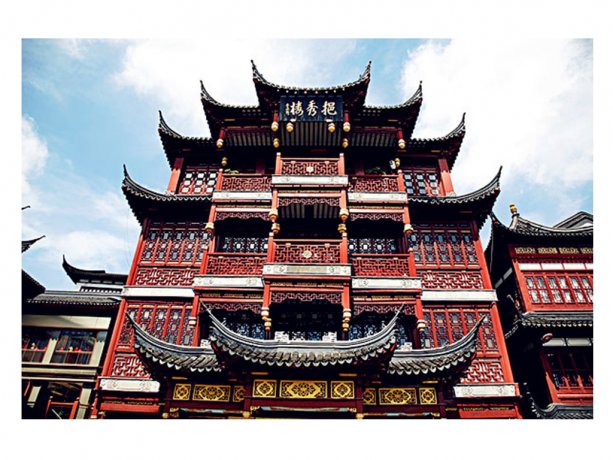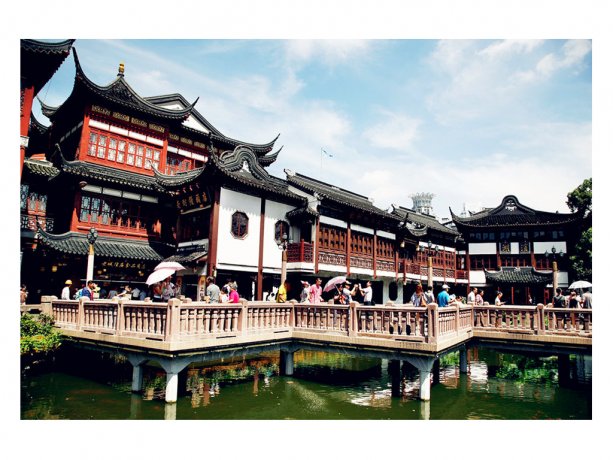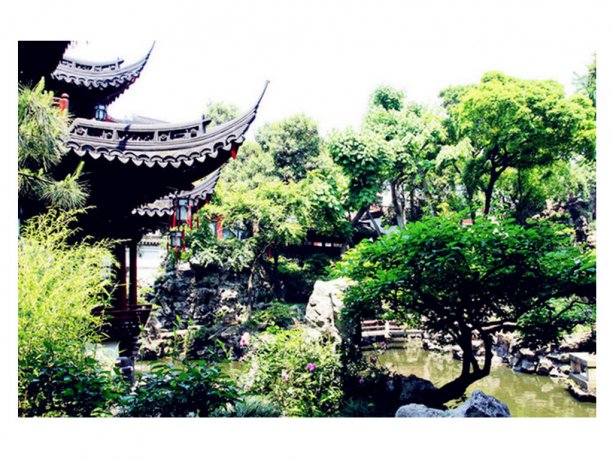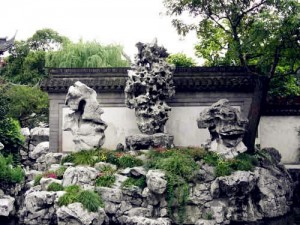Yu Garden, located in the southern part of Shanghai, is a famous classic garden. It is characteristic of the architectural style of the Ming dynasty. Yu Garden, built in 1559, with a history of more than 400 years. It is a private garden of Pan family. As the name implies, Yu means pleasing and peace in Chinese. The founder Pan Yuanduan invited the famous designer to build this garden for his parents as the tranquil place to spend their remaining years in comfortable and happiness.
It opened up to the republic in 1961, the attractions included in the important heritage sites under state protection in 1928. During the celebration for 440 years anniversary in 1999. The formal general secretary Jiang Zemin inscribed a tittle for the garden as Famed Garden by the sea, which now standing in the garden for admiring. The British Queen ElizabethⅡ, the US president Cliton, the German president Herzog, the Japanese Prime Minister Murayama, and other chiefs and honorable guests from other countries also have visit Yu Garden during their stay in Shanghai.
Crowed as ” Mountain Forest in the City”, and enjoys the saying that the surprising and beautiful sceneries of the garden top that of the southeast area, Present Yu Garden also includes the around streets, the marks of the garden — the Zigzag Bridge and Mid-lake Pavilion, the Exquisite Jade Roke-one of the three rocks in south of the Yangtze, as well as calligraphy and paintings of famous artists, hundreds of clay sculptures, brick carvings, horizontal inscribed boards, inscriptions and couplets of past dynasties.
Yu Garden covered an area of 20 000 square meters, the attractions can be divided into four parts, the Eastern Area, the General Area and Internal Garden. Each part owns distinguish features within several characteristics scenic spots. There are totally 48 masterly partitioned scenic spots in the garden, providing visitor a different scence at every step. Chambers, pavilions, halls, rockeries, terraces, and waters all reflect the style of features of Ming and Qing dynasties’ gardening art of the south of the Yangtze.
Main Spots
Zigzag Bridge & Mid-lake Pavilion
Zigzag Bridge and Middle-lake Pavilion are the marks of the garden. Zigzag Bridge is 18 meters long and 2 meters wide, totally composed of granites and Jade stones. It is a perfect leisure site with a pond fish, pavilions on both two sides, stone tables and beaches in pavilions.Mid-lake is a primitive but elegant tea house with great traditional features.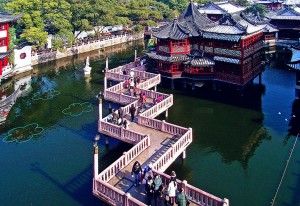
Great Rockery
It is the first scene visitors can see when entering the garden. It is the oldest and largest rockery in the area of the south Yangtze River with height of 14 meters. The top of the rockery is the best site for a bird’s view of the garden. At the foot of the rockery, there are surrounded old trees, beautiful flowers, a Cuixiu Hall as well as curio shops.
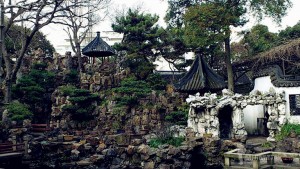
Exquisite Jade Rock
The grotesque rock is one of the three famous rocks in south of the Yangtze, together with Duanyu Peak in Suzhou, and Zhouyun Peak in Hangzhou. It has a height of 3.3 meters and holes. Interestingly it burn an joss stick at the bottom of the rock, the smoke will surprisingly rise from all the holes; similarly, if pour the water on the top of the rock, water will flow out from every hole. To well appreciate this rock from Tai Lake in Wuxi, Jiangsu Province, the founder built a Yuhua Hall facing the rock and inside furniture is graceful made of top grade rosewood of Ming Dynasty.
Sansui Hall
The name Sansui means propitious and lucky in Chinese. The hall is the main construction in Yu Garden with a height of 9 meters and 5 halls built in 1760. Originally used to entertain guests, it became the place for ceremonies of government as well as for gatherings of gentleman and scholar in Qing Dynasty.(1636-1911)
Yangshan Hall
It has derious cloisters facing the pond. It isa superior place to admire the Great Rockery and to appreciate the cultural inscribed stones of Orchild Pavilion by the famous calligrapher Wang Xizhi.
Yu Garden is a major site for kinds of cultural and recreational activities in Shanghai in the past and at present. It has a long history to hold various exhibitions of flowers, calligraphies, paintings, bizzare, stones and other recreations like ascending during the Double-nine Festival, lantern show during the Lantern Festival, tea ceremonies and the like. Adjacent to the Yu Garden, it is the busy Chenghuang Miao(Temple of the Town Gods) and the alive street, which presents a rather Disneyland version of historical China together with the Yu Garden and surrounding bazaar. It is definitely a good stop for meals as well as for souvenir shop.


